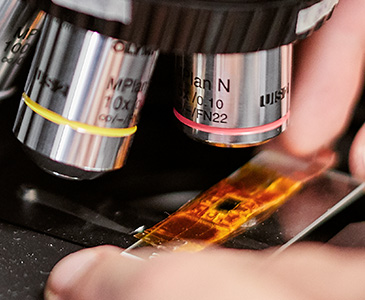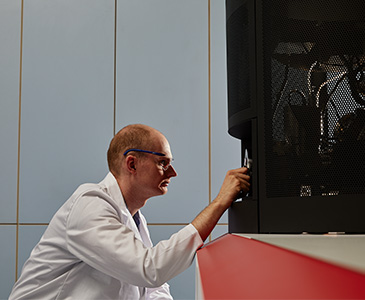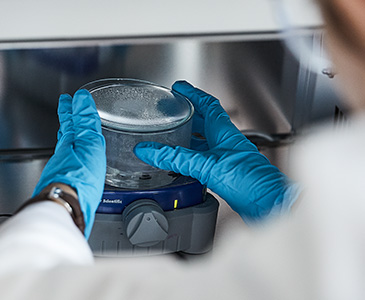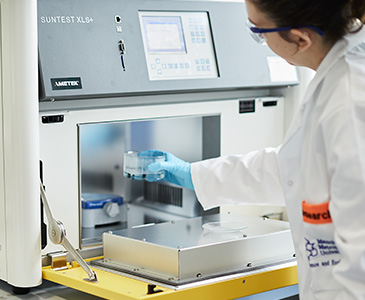Manchester Fuel Cell Innovation Centre is home to an impressive range of advanced equipment located in seven specialist laboratories and spaces.
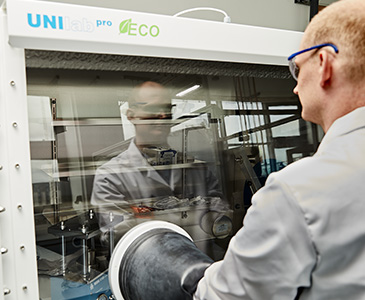
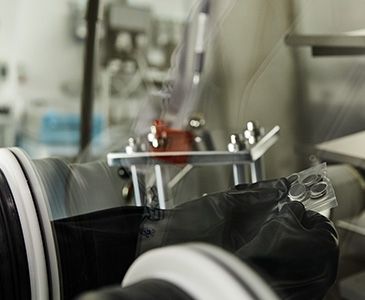
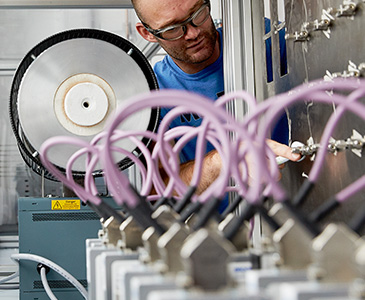
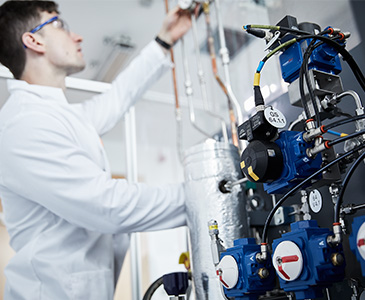
Fuel cell laboratory
The heart of Manchester Fuel Cell Innovation Centre is our fuel cell laboratory, which includes the following equipment:
- Fuel cell test stations to control and measure many of the variables that combine to make a fuel cell work
- An electrolyser, which splits water into hydrogen and oxygen using electrical energy
- A CVD graphene rig, which has a microwave power supply and enables deposition of vertically aligned graphene onto a variety of substrates at lower deposition temperatures
- A catalyst rig to test the degradation of fuels based on hydrocarbons, which can then be used as alternative fuels in fuel cells
- A glovebox workstation, which is a sealed container designed to allow you to manipulate objects within a controlled atmosphere
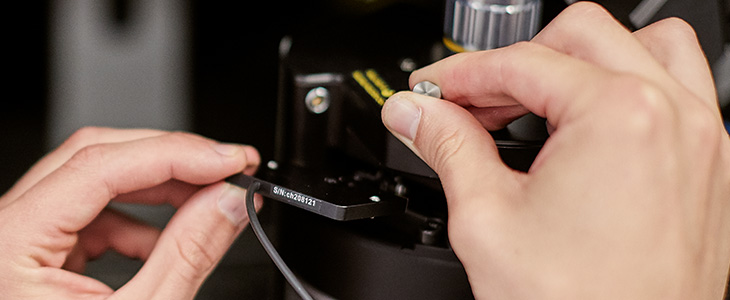
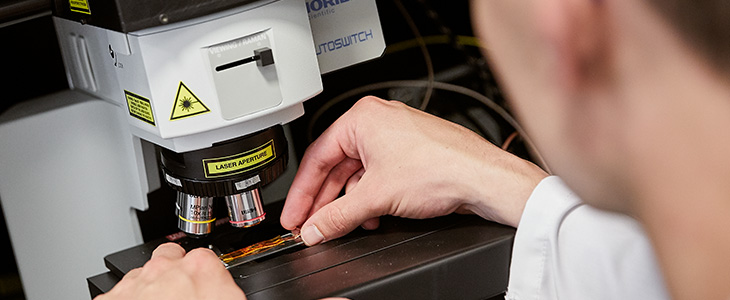
Micromechanics laboratory
This space is home to our atomic force and Ramen microscopes and the nano-indenter.
The Ramen microscope is a laser-based microscopic device used to perform Raman spectroscopy. Nano-indentation enables researchers to measure mechanical properties, such as elastic modulus and hardness of materials in different shapes, sizes and scales.
Analysis laboratory
In our analysis lab, we carry out X-Ray photoelectron spectroscopy, potentiostats and solar simulation. Using these machines, we can measure the elemental composition, empirical formula, chemical state and electronic state of the elements that exist within materials.
We can access the acoustic emissions that fuel cells give off. These contain a wealth of information that can diagnose a condition of the fuel cell and allow for a quick, non-invasive diagnosis.
The solar simulator provides illumination approximating natural sunlight and a controllable indoor test facility used for testing solar cells, sunscreen, plastics, and other materials and devices. Potentiostats allow for the testing, manipulation and recording of the electrical outputs created by fuel cells and batteries.
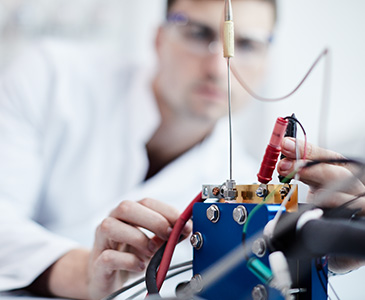
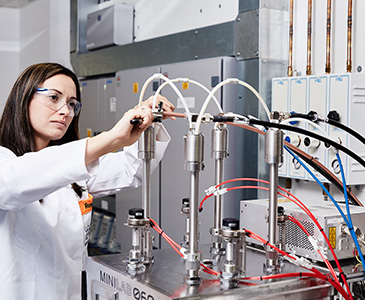
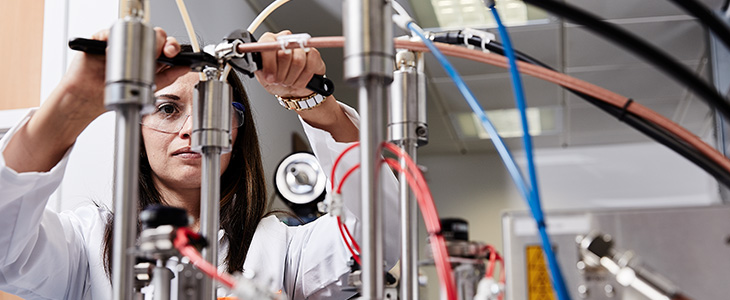
Surface Engineering laboratory
Our magnetron sputtering rig is housed here. The rig is used to deposit a variety of coatings onto different materials, including protective layers onto bipolar plates or thin catalyst layers in PEM fuel cells.
Clean room
This is where our screen printer can be found. Screen printing uses a squeegee to pressure bespoke inks through a mesh onto a substrate, and enables the mass production of electrodes with unique geometries and ink compositions.
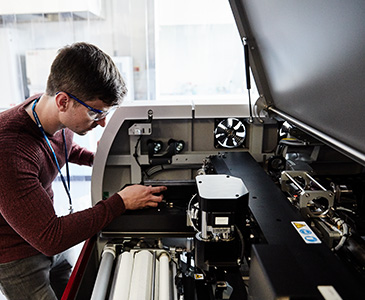
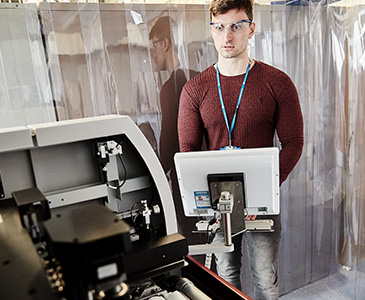
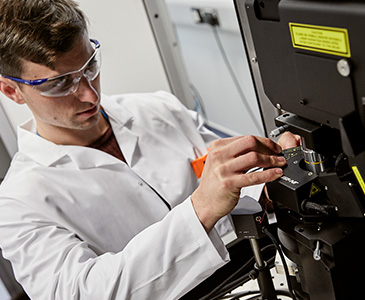
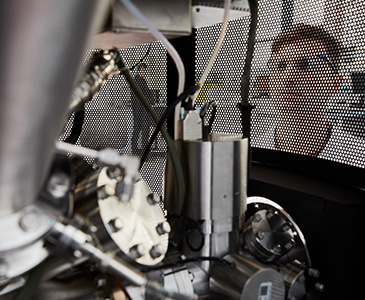
3D printing
Manchester Fuel Cell Innovation Centre has two state-of-the-art metal printers, which produce actual working parts, as opposed to prototypes, in solid or trabecular surfaced metal. The printers allow precise 3D printing using a range of materials, such as nylon and Kevlar, enabling complex components to be created at a fraction of the cost of conventional methods.
Our researchers specialise in the use of electrolysis and fuel cell technology with 3D printing to find new and future-proofed ways of storing energy. Researchers also conduct fundamental research into 2D nanomaterials, including graphene and MoS2.
Innovation room
In this space where SMEs, industry professionals and education partners can meet and work with the Centre team to share expertise and develop ideas.
Adjacent to the innovation room are the officers of the Director and Post-Doctoral Research Assistants.
